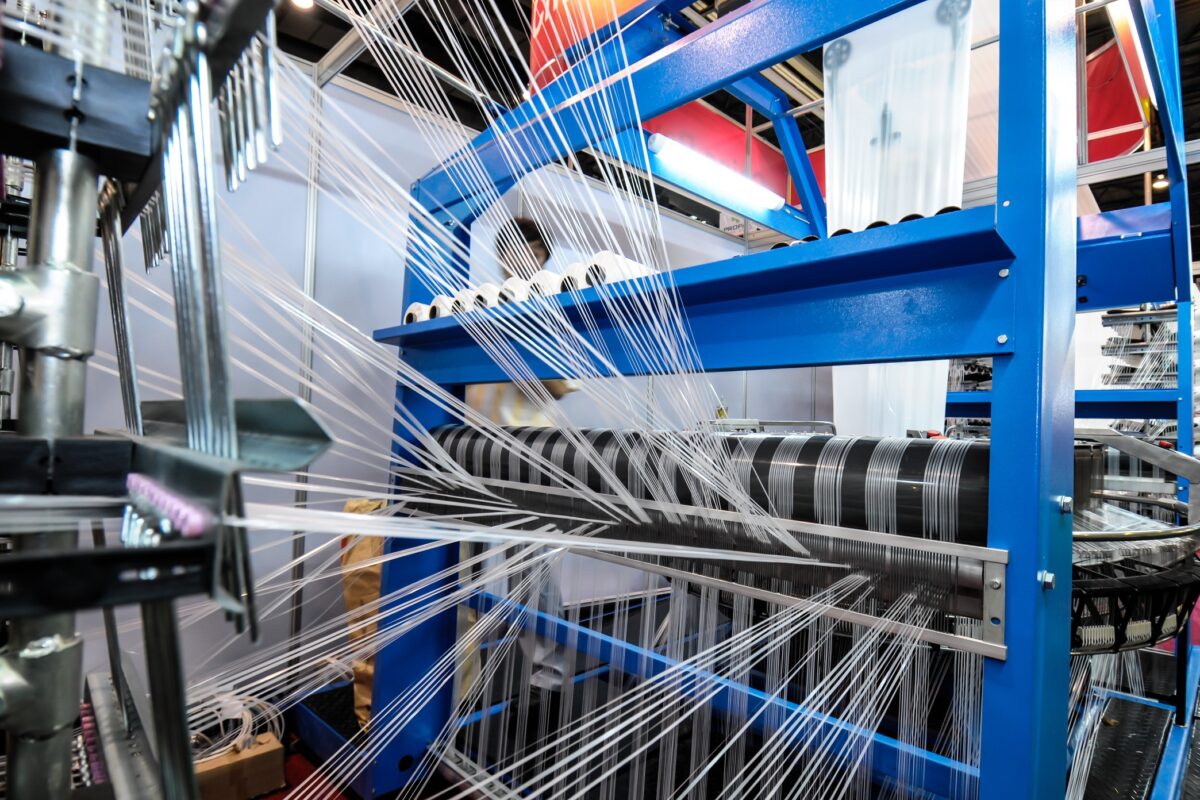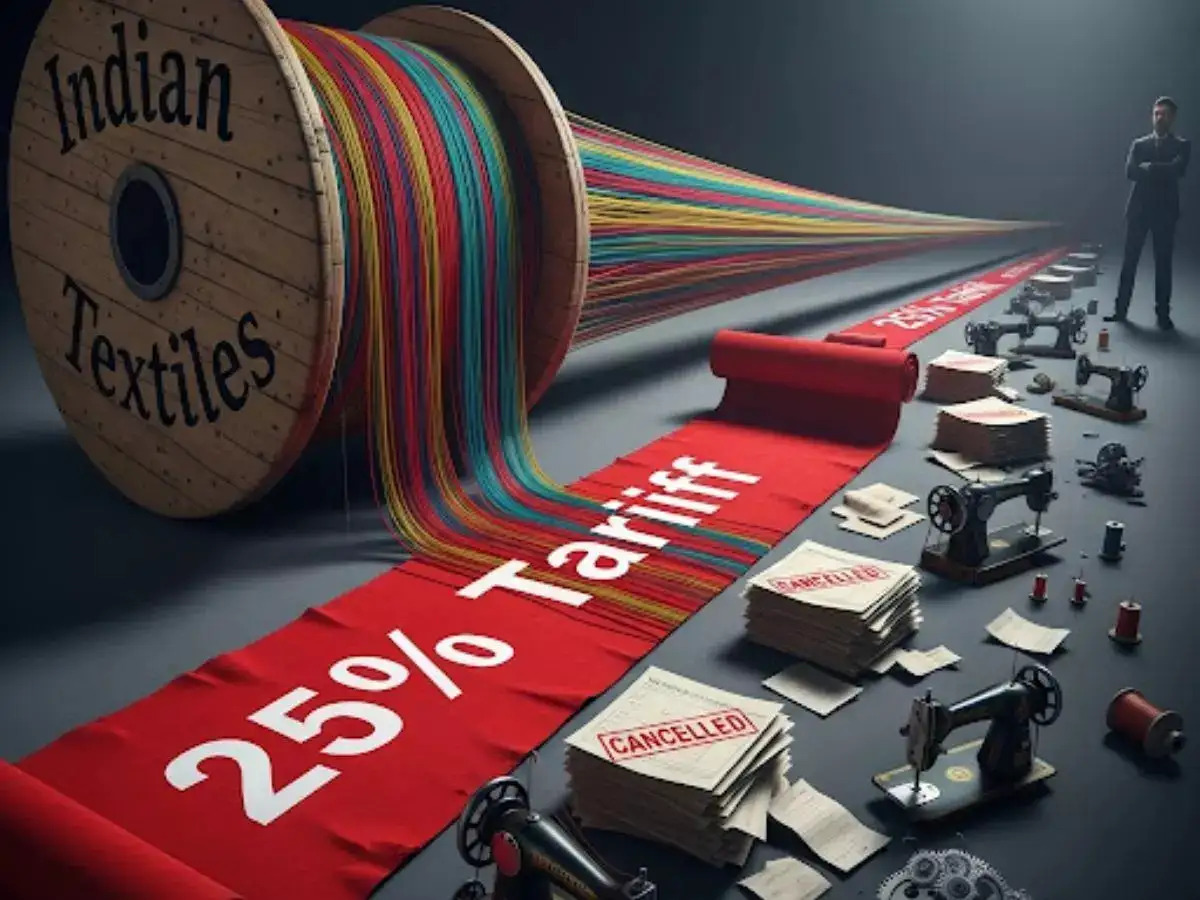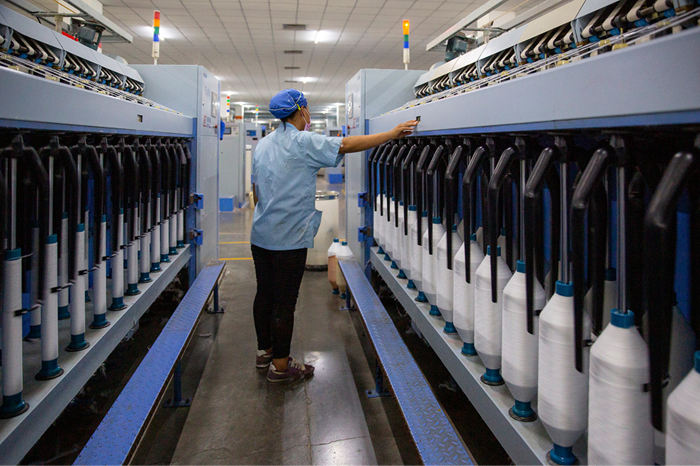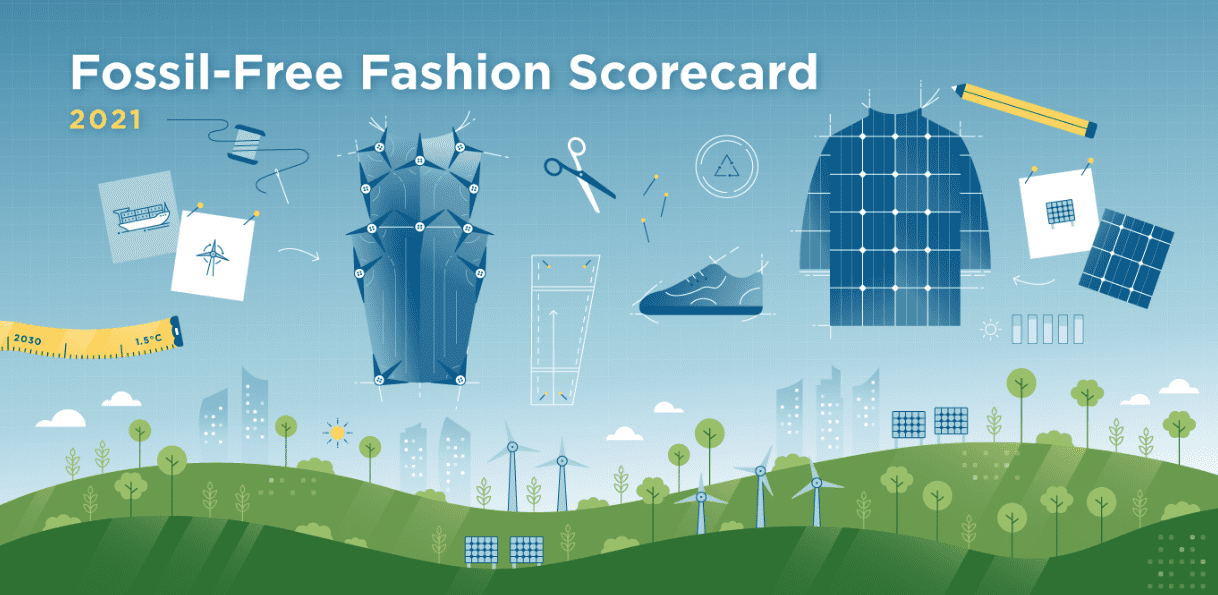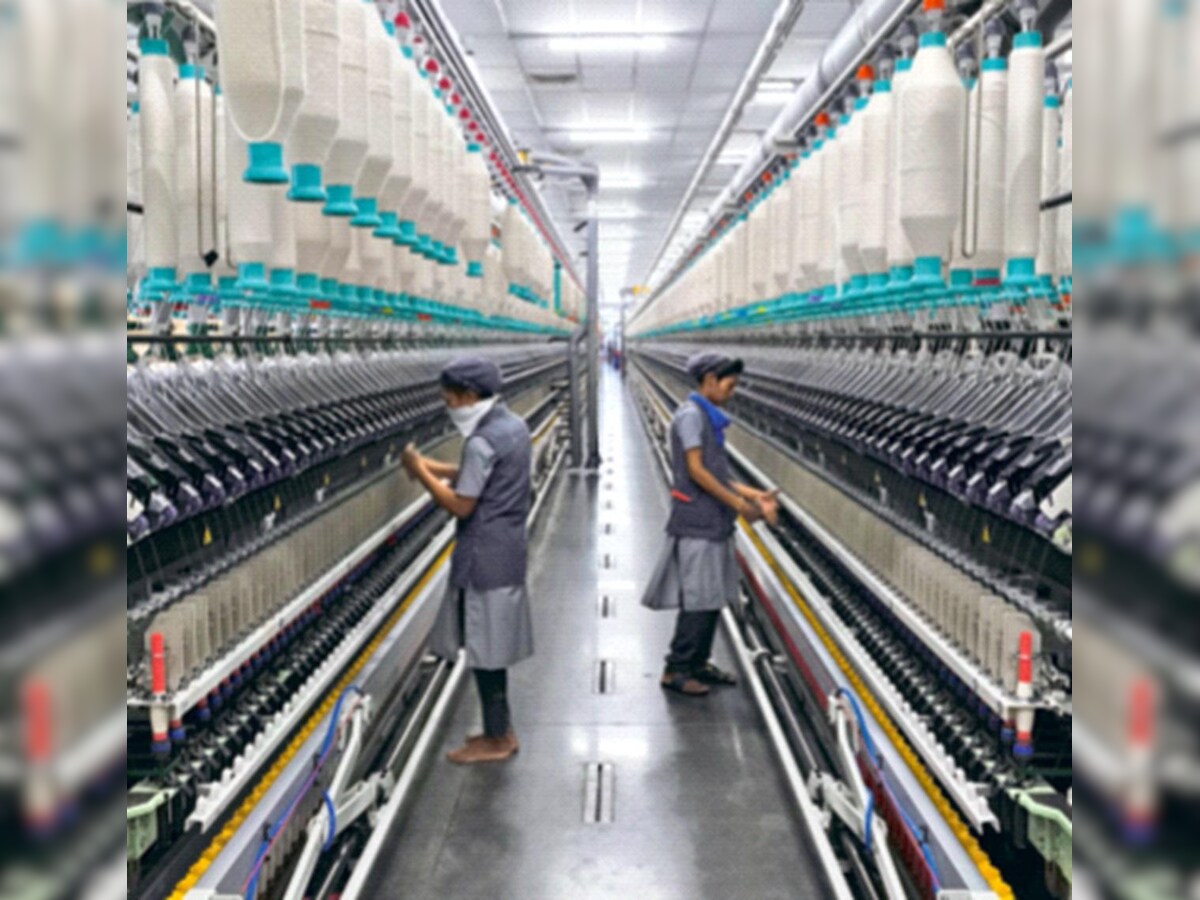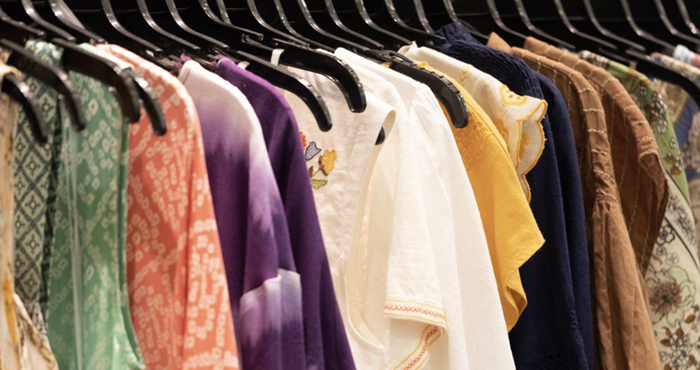FW
The global secondhand apparel market is projected to grow at a 10 per cent CAGR and reach a value of $367 billion by 2029, as per the annual ‘Resale Report’ by ThredUp.
Produced in collaboration with GlobalData, the report highlights, the secondhand apparel market grew five times faster than the broader retail clothing sector in 2024. In the US, the secondhand apparel market grew by 14 per cent in 2024, its most robust annual increase since 2021.
Consumer shopping habits are shifting, with more shoppers opting for secondhand options due to economic pressures. Notably, 59 per cent of consumers said they would choose secondhand if tariffs and trade policies increased new apparel prices, with that figure rising to 69 per cent among Millennials.
As secondhand shopping becomes more mainstream, brands are integrating resale into their business models. A record high 94 per cent of retail executives reported, their customers are already participating in resale. In 2024, 32 per cent of secondhand shoppers made purchases directly from a brand, with nearly half (47 per cent) of Gen Z and Millennial consumers doing so.
Social media platforms are playing a crucial role in driving resale adoption. Among younger shoppers, 39 per cent purchased secondhand apparel through social commerce platforms last year. Half of Gen Z and millennial secondhand shoppers purchased items to create content or share on social media.
Artificial intelligence (AI) is transforming the secondhand shopping experience. Now, 48 per cent of consumers find that AI-powered personalization, search, and discovery make shopping secondhand as easy as buying new. Additionally, 78 per cent of retailers have already invested significantly in AI, with 58 per cent planning to launch AI-powered tools within the next year.
With consumers increasingly thinking secondhand first, the retail industry is adopting powerful new pathways for resale, says James Reinhart, CEO, ThredUp.
From the integration of social commerce and innovative AI applications to the establishment of trade organizations and interfacing with government, it’s clear why resale is seeing accelerated growth and has such a promising growth trajectory, he adds.
Actively advocating for sustainable fashion, the Ghana Used Clothing Dealers Association (GUDCA) has confirmed participation in Landfills2Landmarks 2025, a conference addressing textile waste, circular economy, and economic transformation in Ghana's second-hand clothing sector. Scheduled for May 22-23, 2025 in Accra, this event will help foster collaboration among industry leaders and policymakers.
During a meeting with Henry Treku and Samuel Ofori-Gyampoh, Co-founders of the event, GUDCA reaffirmed its commitment to achieving 100 per cent textile waste diversion by 2050. However, they raised critical concerns regarding data transparency, media misrepresentations, the impact of fast fashion, and the need to modernize the Kantamanto market.
A central issue was the discrepancy in textile waste figures. GUDCA disputed claims of 40 per cent waste, asserting a more accurate figure of 5 per cent. They stressed the importance of reliable data for informed policy decisions and industry accountability.
GUDCA criticized fast fashion brands for manipulating sustainability narratives while contributing to the waste crisis. They challenged the credibility of brands promoting themselves as solutions without addressing overproduction. The association also questioned the effectiveness of Shein’s $15 million grant to The OR Foundation, arguing it doesn't solve the root problem of overproduction and declining garment quality.
GUDCA called for increased transparency in global sustainability efforts, emphasizing measurable impact over superficial appearances. They advocated for stronger import regulations to protect Ghana’s second-hand clothing sector and hold brands accountable for their environmental footprint.
The importance of modernizing Ghana's second-hand clothing market was highlighted to align with the 100 per cent waste diversion goal. Market modernization would improve waste management, create jobs, and mitigate risks like fires.
GUDCA reiterated the need for Extended Producer Responsibility (EPR) policies to promote garment reuse and recycling, urging policymakers to implement these measures without harming livelihoods.
Treku emphasized addressing imbalances in the global second-hand clothing trade, advocating for transparency and fairness. He positioned Landfills2Landmarks 2025 as a vital platform for integrating sustainability into brand strategies, emphasizing the need for responsible production, waste reduction, and circular economy participation.
Ofori-Gyampoh introduced the CremeXchange Textile Traceability App and marketplace to improve data accuracy and transparency, and announced training programs for digital tools in circular commerce and waste tracking.

The recent investigations by the Central Goods and Services Tax (CGST) officials into over 20 textile units across India, over misclassification of processing activities, highlight a critical challenge within the GST regime. At the heart of the problem is the distinction between ‘job work services’ (5 per cent GST) and transformative processes (18 per cent GST), and it reveals deeper complexities in interpreting and implementing GST within the textile sector.
Ambiguity and interpretation
The crux of the problem lies in the subjective interpretation of "change in the cloth's nature." While washing and dyeing are generally classified as job work (5 per cent), processes like printing, bleaching, and other treatments that "change its main qualities" attract an 18 per cent tax. However, the line between these categories is often blurred, leading to disputes and potential revenue leakage.
Industry concerns
Lack of clarity in definitions: The definitions of "job work" and "transformative processes" lack precise, quantifiable parameters. This ambiguity allows subjective interpretations, leading to inconsistencies in tax application. For example, the degree to which a dyeing process "changes the main qualities" of a fabric can be debated. Is a subtle color change a transformative process, or is it merely job work?
Compliance burden: The textile industry, particularly small and medium enterprises (SMEs), faces a significant compliance burden in accurately classifying their activities. The need to meticulously document each process and justify its classification adds to operational costs and administrative complexities.
Revenue implications: The CGST officials' estimate of "hundreds of crores" in potential revenue loss underscores the significant financial impact of misclassification. This shortfall affects government revenue and potentially distorts market competition, as businesses misclassifying their activities gain an unfair advantage.
Impact on SMEs: SMEs, which constitute a significant portion of the textile industry, are particularly vulnerable to the complexities of GST compliance. They may lack the resources and expertise to navigate the intricate tax regulations, increasing their risk of non-compliance.
Frequent changes in tax rates: The fact that the 45th GST council meeting discussed increasing tax rates on dyeing and printing, creates uncertainty within the industry. This type of fluctuating discussion creates problems for businesses trying to plan for the future.
Potential impact
It is difficult to find the exact quantity of tax evasion that is currently under investigation, due to these cases being in progress. However, there are numerous reports on the effects of GST on the textile industry.
For example, a report by the Confederation of Indian Textile Industry (CITI) highlights the challenges faced by SMEs in complying with GST regulations, particularly concerning job work and input tax credit. Similarly, a Textile Ministry report from 2022 shows that 80 per cent of textile units in India are classified as SMEs. Meaning that they have a very high likely hood of making accidental mistakes with the complexities of these laws.
So a textile unit specializing in organic dyeing can claim its processes are "job work" because they don't fundamentally alter the fabric's structure. However, CGST officials, argue that the specialized dyeing significantly enhances the fabric's value and marketability, thus classifying it as a transformative process. Similarly, a company that uses advanced patterning machine to create textures on a fabric labels the activity as job work because they are not adding any color. The CGST officials, however, say the processes change the fundamental qualities of the fabric, and label it as printing, or a similar taxable event.
Tax expert sa, the ambiguity in GST classification is a major concern for the textile industry. There needs to be clearer definitions and guidelines to ensure fair and consistent tax application. A lot of problems arise from differing interpretations of the term ‘job work’. The government needs to either make the definitions of job work, and process work, much clearer, or simplify the tax rates.
What needs to be done…
1. Clarification of definitions: The government should issue detailed guidelines and clarifications on the definitions of "job work services" and "transformative processes," providing concrete examples and parameters.
2. Simplified tax structure: Consider simplifying the tax structure for the textile industry to reduce the potential for misclassification and disputes.
3. Capacity building: Conduct workshops and training programs to educate textile businesses, especially SMEs, on GST compliance and accurate classification.
4. Technology integration: Explore the use of technology, such as AI-powered classification tools, to assist businesses in accurately categorizing their activities.
5. Industry consultation: Engage in regular consultations with industry stakeholders to address their concerns and gather feedback on GST implementation.
Thus the CGST investigations highlight the need for a comprehensive review of the GST framework for the textile industry. By addressing the issues of ambiguity, compliance burden, and revenue leakage, the government can create a more transparent and efficient tax regime that fosters the growth and competitiveness of this vital sector.

In a retail scenario that is constantly shifting with changing consumer preferences and economic pressures, Gap Inc., and specifically its flagship brands Gap and Old Navy, have emerged as unexpected winners in 2024. Once facing concerns about their relevance with declining sales, these iconic American brands have staged a remarkable comeback, with a blend of nostalgia, affordability, and a keen understanding of the modern consumer.
The numbers don't lie
Gap Inc.'s Q 2024 earnings revealed a significant turnaround. Gap brand saw a 7 per cent increase in comparable sales, a stark contrast to previous quarters. Old Navy, the company's value-driven powerhouse, reported a 5 per cent rise in comparable sales, exceeding analyst expectations. This increase is reflected in the company's stock price, which has seen a 30 per cent increase year-to-date. Moreover, net income rose 11 per cent to $206 million, and the company maintains a healthy balance sheet with $2.6 billion in cash reserves.
Success with a multi-pronged approach
Several key factors and initiatives have contributed to this resurgence, pushed up by the leadership of Richard Dickson and the execution of brand presidents:
Leadership and merchant focus: Dickson, with his proven track record at Mattel, brought a ‘new playbook’ focused on ‘championing original, trend-right products’ and ‘linking the product story with popular culture.’ His emphasis on ‘continuous improvement through innovation’ has shifted the company from ‘fixing the fundamentals’ to sustained growth. “We continue to perform while we transform,” Dickson opines, highlighting the company’s evolution.
Nostalgia and re-embrace of iconic styles (Gap): Gap's resurgence is heavily attributed to its successful revival of classic denim styles. The ‘90s Loose’ and ‘Carpenter’ jeans have resonated strongly with Gen Z and millennials, tapping into the current nostalgia trend. "Gap is back in the cultural conversation. This brand was built on strong product narratives, with brilliant marketing expressed through big ideas. And over the past year, each of these were reignited," Dickson says. Collaborations with influencers and high end brands like Dôen and Cult Gaia, alongside targeted social media campaigns, gave a boost to this message. Gap’s campaigns, like ‘Linen Moves’ and ‘Get Loose’ with artists like Tyla and Troye Sivan, have successfully reconnected with its audience. What’s more the introduction of innovative fabrics like Cashsoft has also driven sales.
Old Navy's value proposition: In an era of economic uncertainty, Old Navy's focus on affordable, family-friendly apparel has proven to be a winning formula. The brand has re-vamped its product offerings, with greater focus on denim and ‘relevant’ fashion. "Something that looks like Gap at Old Navy makes the customer feel they have access to relevant fashion at prices the family can afford," said Janet Joseph Kloppenburg. The multicategory approach, including activewear (with the new StudioSmooth collection), wear-to-work, and casual wear, has given it competitive advantage. “Old Navy has been connecting our customers with products they want through compelling storytelling and executing with clarity in price," Dickson said.
The company is also actively cutting costs through ‘low-value work’ elimination and redeployment into high-value projects, with a goal of $150 million in expense reductions in 2025.
Focus on inventory management and sourcing: Gap Inc. has improved its sourcing speed, allowing it to quickly capitalize on trending styles. “They’re also sourcing faster,” Kloppenburg says. “When a trend like the barrel-leg jean comes out and everybody wants it, they have been able to get it in season.” The focus on monthly product drops and agility has been crucial.
Omnichannel excellence: Gap Inc. has invested heavily in its omnichannel capabilities, seamlessly integrating its online and offline presence. Initiatives like "buy online, pick up in store" (BOPIS) and enhanced mobile shopping experiences have contributed to increased convenience and customer engagement. Data shows that BOPIS orders have increased by 25 per cent in the last six months, highlighting the success of this strategy.
Meanwhile both Gap and Old Navy have made strides in promoting inclusivity and diversity in their marketing and product offerings. This has resonated with a broader customer base and enhanced brand perception. Gap has increased its size range and featured diverse models in its campaigns, reflecting the changing demographics of its customer base.
Also, the appointment of Zac Posen as creative director has brought renewed focus on design and attention to detail across all brands. His influence is seen in high-profile events like the Met Gala and the Oscars.
Thus Gap Inc. is focused on maintaining momentum by continuing to innovate, enhance customer experiences, and adapt to evolving market trends. With a strong leadership team and a renewed focus on its core strengths, Gap and Old Navy are well-positioned for continued success.
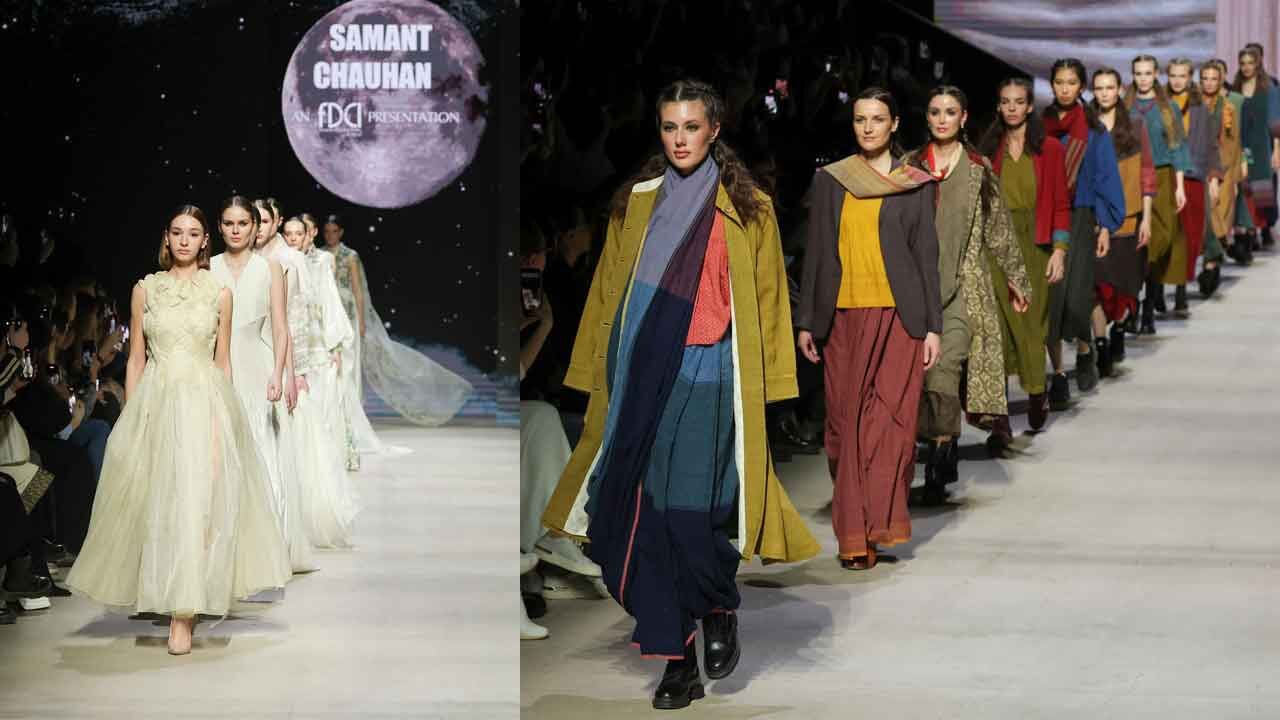
The Fourth Moscow Fashion Week, held from March 13 to 18, 2025, at the Manege Central Exhibition Hall, reaffirmed its status as a key event in the global fashion industry. The event attracted leading designers, industry professionals, international buyers, and fashion enthusiasts, creating a dynamic platform for creativity and cross-cultural exchange. Among the standout participants were Indian designers, whose compelling showcases highlighted their growing influence on the global fashion stage.
Indian designers bring tradition and innovation to Moscow
A major highlight of Moscow Fashion Week was the collaboration ‘FDCI presents: CoEK-Khadi India | Samant Chauhan,’ led by the Fashion Design Council of India (FDCI). This not-for-profit organization, which nurtures over 400 designers, has been instrumental in promoting Indian fashion globally. The collection presented in Moscow celebrated India's cultural richness while embracing sustainability, with Khadi, a handwoven, eco-friendly fabric taking center stage.
Indian designers masterfully blended traditional craftsmanship with contemporary aesthetics, demonstrating the versatility and enduring appeal of their heritage. Their creations resonated with international audiences, reinforcing the global fashion industry's increasing shift toward ethical, sustainable production. By integrating Khadi into high-fashion collections, Indian designers underscored their commitment to responsible luxury, aligning with the broader industry push for environmentally conscious fashion.
A global platform for creativity
The event featured an array of collections from both Russian and international designers, showcasing the latest trends and innovations. Indian designers used this opportunity to highlight the depth and diversity of their craft, drawing inspiration from India’s rich textile traditions while incorporating modern silhouettes and techniques. Their participation not only broadened the scope of the event but also deepened the cultural dialogue between India and Russia.
Beyond runway showcases, Moscow Fashion Week included lectures and discussions on key industry topics, offering insights into fashion business strategies and design evolution. The global perspective was further emphasized through the World Fashion Shorts festival, held at the Artplay Design Center. This cinematic showcase featured short films from Argentina, Germany, Mexico, Russia, the United States, the Philippines, and South Africa, reflecting the interconnected nature of the fashion world.
Strengthening cross-cultural ties through fashion
The presence of approximately 200 industry professionals, including designers, stylists, buyers, and journalists, highlighted Moscow Fashion Week’s role as a significant networking hub. Indian designers not only gained exposure but also fostered collaborations that could expand their reach in international markets.
As the event concluded, it reinforced the importance of fashion as a universal medium for cultural exchange. The participation of Indian designers served as a testament to their evolving role in shaping global trends. By merging tradition with innovation and sustainability, they positioned themselves as key players in the future of ethical, high-fashion design. Moscow Fashion Week, in turn, continued to establish itself as an essential stop on the international fashion calendar, bridging diverse creative perspectives from around the world.
Bangladesh is strategically pursuing cotton imports from the United States to mitigate the risk of increased tariffs from the country, said Md Touhid Hossain, Foreign Affairs Adviser at a workshop focused on boosting domestic cotton cultivation.
This initiative will help foster a trade relationship that discourages the US from imposing additional tariffs on Bangladeshi goods, particularly ready-made garments, he added.
Imposition of tariffs by the US on various countries since the advent of Trump administration, and while Bangladesh has yet to face additional levies poses risks for the country, Hossain acknowledged
Bangladesh’s strategy of importing cotton from the US is seen as a diplomatic move to strengthen trade ties and reduce potential future trade barriers.
The Bangladesh Government also plans to classify cotton as an agricultural product and offer subsidies to encourage domestic cultivation, thereby reducing dependence on imports. Hossain pledged a decision on this matter within three months.
Furthermore, Hossain urged the National Board of Revenue (NBR) to eliminate the 4 per cent advance income tax (AIT) on locally produced cotton. Addressing Bangladesh's scheduled graduation from Least Developed Country (LDC) status in 2026, Hossain dismissed calls for postponement, emphasizing the need for businesses to prepare. He expressed confidence that the three-year grace period following graduation, during which duty-free benefits will continue in regions like the European Union, will provide sufficient time for necessary adjustments.
Regarding the pursuit of GSP Plus benefits from the EU, Hossain affirmed Bangladesh's commitment to meeting the required conditions, ensuring continued favorable trade access post-graduation. The focus is on preparing for the future, rather than delaying inevitable transitions, to maintain and enhance Bangladesh's position in the global market, he said.
Apparel Group’s brand R&B plans to expand its presence in Gulf Corporation Council (GCC) region by opening 250 stores by 2025-end.
R&B currently operates 149 stores in the GCC. It recently opened stores at Reem Mall in Abu Dhabi, Silicon Central in Dubai, Al Hayat Mall in Bahrain, City Centre Muscat and Safeer Mall in Oman, Jouri Mall and Mujan Park in Saudi Arabia, and Downtown Souq in Al Khor, Qatar.
It plans to open stores in Bawabat Al Sharq Mall in the UAE, a flagship 40,000 sq f store in Marina Mall in Kuwait, etc.
R&B recently launched its R&B Ramadan Festive Collection offering elegant, charming, and vibrant styles for every iftar, suhoor, and special gathering. Designed with the latest trends in clothing, footwear, and accessories for men, women, and children, this collection seamlessly blends tradition with contemporary style.
For women, the collection offers beautifully designed floral dresses and coordinated sets perfect for Ramadan evenings. It offers a sophisticated line of printed shirts and unique crochet for men.
The collection also includes a kidswear range featuring carefully designed pieces – sequined floral dresses for girls and lightweight, comfortable attire for boys, each piece crafted to make every celebration special.
R&B’s Ramadan Collection 2025 is available at all R&B stores in the GCC, online at www.randbfashion.com, and showcased across social media.
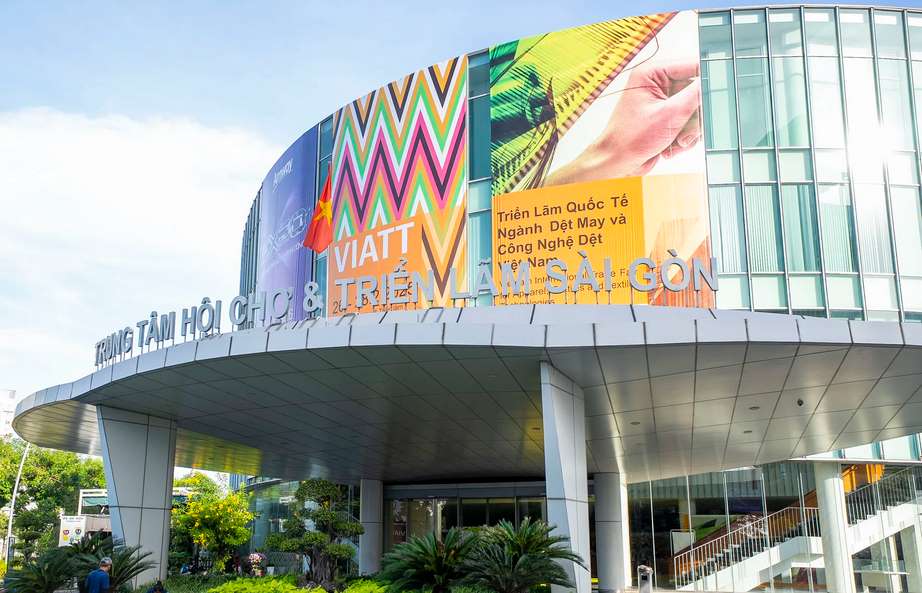
Record growth in attendance and exhibitors
The Vietnam International Trade Fair for Apparel, Textiles, and Textile Technologies (VIATT) 2025 concluded successfully, further solidifying its role as a key trade platform for the global textile industry. The second edition, held from 26-28 February 2025, saw over 19,000 visits, reflecting a 10 per cent rise from 2024, with attendees from 70 countries and regions. Additionally, the exhibitor count grew to 463 from 24 countries, marking a nearly 13 per cent increase. The fair introduced new zones and a pavilion, emphasizing Vietnam’s advancement in textile innovation and sustainability.
Hosted by Vietnam’s Ministry of Industry and Trade (MOIT), the event reinforced Vietnam’s strong presence in the global textile sector. Deputy Minister Phan Thi Thang highlighted the industry’s key role in exports, contributing 12-16 per cent of Vietnam’s total turnover. She noted that Vietnam’s 17 free trade agreements (FTAs) are expected to drive textile exports to $48 billion by 2025. Wilmet Shea, General Manager of Messe Frankfurt (HK) Ltd, praised the show’s success, especially with the introduction of the European Zone and India Pavilion, which enhanced international collaboration and business opportunities.
Showcasing innovation and sustainability
VIATT 2025 placed a strong focus on sustainability and technology, aligning with global trends. The new Innovation and Digital Solutions Zone and Econogy Hub emerged as key highlights, displaying cutting-edge advancements in eco-friendly textiles. Exhibitors in the Econogy Hub reported increased interest in recycled fibres and sustainable materials, particularly from Japan and Europe.
The European Zone showcased high-quality textiles from France, Portugal, and the UK, highlighting premium craftsmanship and sustainable production. Daniel Connolly of the UK Fashion and Textile Association (UKFT) underscored Vietnam’s rapid consumer growth and technological investments, citing the UK-Vietnam free trade agreement as a driving force for stronger business ties.
Exhibitors praised the fair’s ability to attract serious buyers. Representatives from China’s Shaoxing Sunsmile Textile Co Ltd and Vietnam’s Muye Home Fashion noted the high-quality visitors and growing demand in Southeast Asia. Meanwhile, US-based Inkcups introduced its sustainable tagless printing technology, attracting strong interest from various sectors.
Global buyers and industry insights
The fair drew nine buyer delegations from Europe, the US, and Asia, with VIP buyers from major brands like Adidas, Nike, IKEA, and ZARA. Buyers highlighted the show’s diverse sourcing options, with strong interest in eco-friendly materials and high-quality textiles.
Alongside business transactions, VIATT 2025 hosted 11 seminars and panel discussions, covering design trends, business strategies, and technological innovations. Key events included the Interior Design Roundtable on sustainable smart textiles and the Vietnam Investment Summit, fostering trade between China and Vietnam. A seminar on sustainable fashion, led by Redress, featured insights from enterprises like ECOSOI and Passi, emphasizing eco-conscious production.
Fashion shows and parades from Vietnamese, Thai, Taiwanese, and French designers showcased sustainable and functional fashion. Hands-on workshops, including macrame weaving, engaged attendees, reinforcing the fair’s role as a hub for creativity and knowledge-sharing.
Speakers at the event echoed the industry’s shift towards sustainability and digital transformation. Ngoc Thu Le of Redress highlighted the need to educate consumers on sustainable fashion, while Calvin Wong of AiDLab noted strong interest in AI-driven textile inspection solutions. With growing participation and a forward-looking approach, VIATT continues to strengthen Vietnam’s position as a global textile powerhouse.
Nearing complete liquidation of its operations, Select Fashion plans to shut down 35 stores across the UK. The company has reportedly engaged consultants to oversee its liquidation process.
The retailer had already shut down stores across 35 locations by March 14, continuing a process that began earlier in the year. The company’s liquidation process is being managed by restructuring specialist Moorfields as per a voluntary arrangement signed last year.
The impending financial collapse of the company is likely to leave employees without severance pay. This situation follows Select Fashion's previous administration collapse in 2019, from which it was rescued by Genus UK.
Currently owned by Cafer Mahiroglu, Founder and CEO, Select Fashion reported a pre-tax loss of $1.43 million for the year ending February 2023 in its latest financial year results.
Select Fashion joins a growing list of retail failures in recent years, including Quiz, which entered administration last month. That move resulted in the loss of approximately 200 jobs and the closure of 23 locations.
In the first eight months of the fiscal year 2024-25, Bangladesh's apparel exports to key markets like the EU, the US, and Canada registered a double digits growth as demand from major brands and retailers increased.
As per data from the Export Promotion Bureau (EPB), Bangladesh's RMG exports grew by 10.64 per cent globally, reaching $26.79 billion during the period spanning July 2024-February 2025.
Most of these exports were directed to the European Union, which absorbed 50.10 per cent of the total RMG exports, valued at $13.42 billion. Exports to the US reached $5.06 billion constituting18.91 per cent share, and Canada accounted for 3.16 per cent share with exports reaching $845 million. Exports to another significant market, the UK grew to $2.93 billion, representing 10.94 per cent of the total.
In terms of growth, EU exports rose by 11.53 per cent Y-o-Y, while the US saw a robust 16.38 per cent increase, and Canada grew by 14.12 per cent.
The UK, however, experienced a more modest 3.74 per cent growth.
Within the EU, Germany is the largest destination ($3.38 billion), followed by Spain ($2.35 billion), France ($1.43 billion), Italy ($1.05 billion), Poland ($1.13 billion), and the Netherlands ($1.43 billion). Notable growth was seen in Germany (11.03 per cent), the Netherlands (25.06 per cent), Poland (12.06 per cent), Denmark (14.58 per cent), and Sweden (21.12 per cent).
Exports to non-traditional markets also showed growth, with a 6.23 per cent overall increase, totaling $4.52 billion. Japan led these markets with $839 million in imports, followed by Australia ($582 million) and India ($478 million). Exports to Turkey ($305 million) and Mexico ($229 million) were also substantial.
Specifically, exports to India increased by 18.58 per cent, Mexico by 25.14 per cent, and Turkey by 32.20 per cent. While exports to Japan, Australia, India, Turkey, and Mexico were positive, shipments to Russia, Korea, the UAE, and Malaysia declined.
Mohiuddin Rubel, Former Director, BGMEA, attributes this growth to shifting global trade dynamics, offering Bangladesh opportunities if it strengthens its production capabilities. He emphasizes on the need to invest in backward linkages to maintain RMG sector competitiveness.
Highlighting the continued importance of the EU and US markets, Rubel points out to the potential for growth in non-traditional markets. Diversifying into these regions could lessen the reliance on traditional destinations, he emphasizes.

